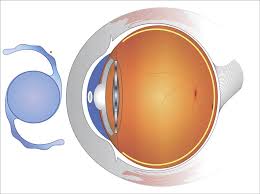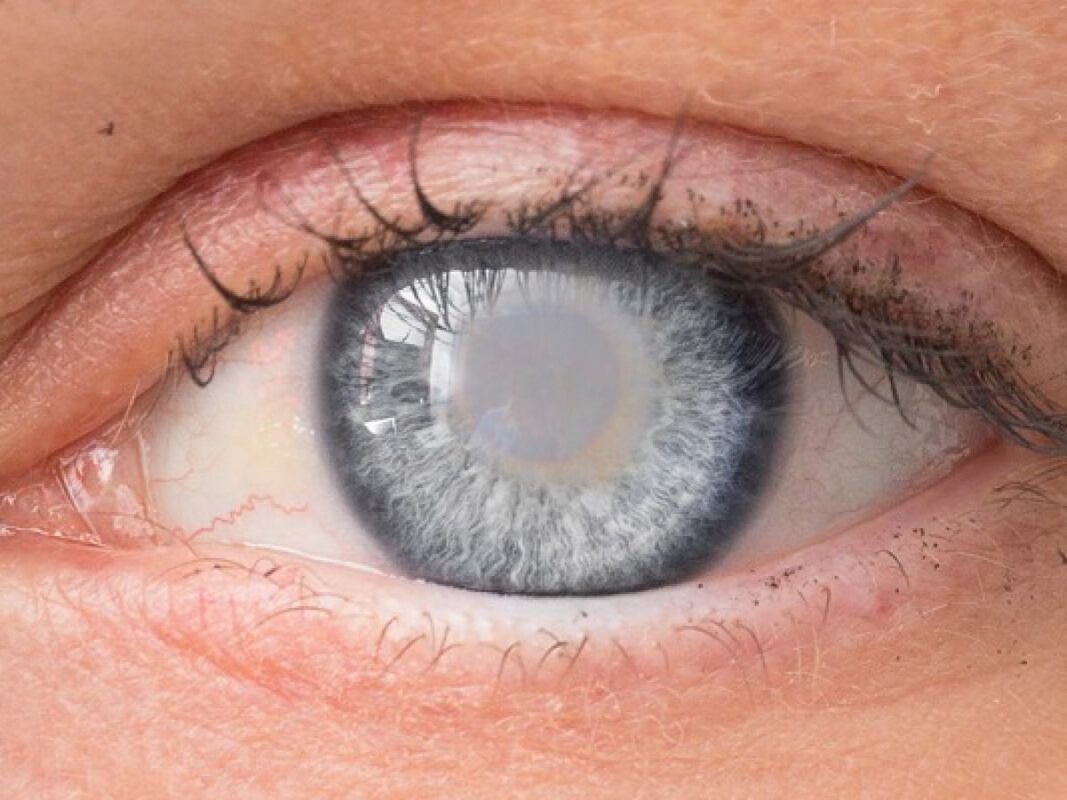Introduction:
Cataract surgery is one of the most successful and commonly performed eye surgeries worldwide. It involves the removal of the cloudy natural lens of the eye and the implantation of an artificial intraocular lens (IOL) to restore vision. For people who have astigmatism along with cataracts, toric lenses offer a specialized solution that can correct both vision problems in a single procedure. This guide will explore everything you need to know about toric lenses for cataract surgery, including their benefits, how they work, and why they are a popular choice for individuals with astigmatism.
What is Cataract Surgery?
Doctors perform cataract surgery by replacing the natural, cloudy lens inside the eye, which causes blurry vision, with a clear artificial lens called an intraocular lens (IOL). They use advanced techniques for the procedure, which is one of the most common surgeries performed globally. It is highly effective in restoring clear vision, and most patients experience significant improvements immediately following the procedure.
While the primary goal of cataract surgery is to restore clear vision, for patients who also have other refractive errors like astigmatism, simply removing the cataract and replacing the natural lens with a monofocal IOL may not be enough. That’s where toric lenses come into play.
What is Astigmatism?
Astigmatism occurs when the cornea or lens inside the eye has an irregular shape. Instead of being smooth and spherical, the cornea takes on a football-like shape, causing blurry or distorted vision. People with astigmatism often experience blurred vision at all distances, and this condition can significantly affect the quality of life.
Doctors typically correct astigmatism using glasses or contact lenses that compensate for the cornea’s irregular shape. However, these solutions don’t always provide the most satisfactory results, especially for individuals who also have cataracts. In such cases, toric lenses provide a unique and effective solution to treat both conditions simultaneously.
What Are Toric Lenses?
Surgeons use toric intraocular lenses (IOLs) during cataract surgery to correct astigmatism. These specialized lenses have different powers in different meridians to compensate for the cornea’s uneven curvature. This helps focus light properly on the retina, resulting in clearer, sharper vision.
Unlike traditional monofocal lenses, which have a single power throughout, toric lenses have two different powers, one for correcting astigmatism and one for treating the cataract. By addressing both conditions in a single procedure, toric lenses eliminate the need for glasses or contact lenses after cataract surgery, especially for distance vision.

How Do Toric Lenses Work?
Toric lenses work by incorporating two different optical powers that correct for the uneven shape of the cornea. Toric lenses have a cylindrical shape that compensates for the specific astigmatic curve in the eye, unlike monofocal IOLs, which correct a single refractive error such as nearsightedness or farsightedness.
In simpler terms, toric lenses provide different powers along different axes, ensuring that light entering the eye focuses on the retina evenly and clearly, regardless of the corneal irregularities that cause astigmatism.
Toric lenses are available in various designs, and their optimal orientation is critical to achieving the best visual outcome. Surgeons must position the lens precisely during surgery, aligning its axis with the correct meridian of the eye. Surgeons use advanced imaging and marking techniques to ensure the correct placement of toric IOLs.
Benefits of Toric Lenses for Cataract Surgery
- Correction of Astigmatism: The primary benefit of toric lenses is their ability to correct astigmatism during cataract surgery. By compensating for the irregular shape of the cornea, toric lenses help achieve clearer and sharper vision without the need for glasses or contact lenses.
- Reduced Dependence on Glasses: Since toric IOLs can correct astigmatism and improve distance vision, many patients find they no longer need glasses for daily activities, such as reading road signs, watching television, or working on a computer.
- Improved Visual Acuity: Toric lenses offer excellent visual acuity by providing a more precise focus of light on the retina, which improves the clarity and sharpness of vision compared to standard monofocal lenses.
- Convenience: For individuals with both cataracts and astigmatism, using a toric lens to address both problems in one surgery is convenient. It reduces the need for multiple surgeries or additional treatments to correct astigmatism.
- Less Risk of Post-Operative Issues: By addressing astigmatism at the time of cataract surgery, toric lenses can minimize the need for corrective lenses or procedures after surgery, reducing the chances of visual disturbances like glare or halos.
Types of Toric Lenses for cataract surgery
There are several types of toric lenses available, and your surgeon will help determine the most appropriate option based on your eye health and visual needs. The main types include:
1. Standard Toric Lenses
Standard toric lenses are designed to correct moderate levels of astigmatism. These lenses are available in different cylinder powers and axis configurations, allowing them to address a range of astigmatism severities.
2. Premium Toric Lenses
Premium toric lenses offer additional benefits, such as the ability to address both astigmatism and presbyopia (age-related difficulty focusing on near objects). Some premium toric lenses, like the Accommodating Toric IOLs, allow for more natural focusing at different distances and can provide an enhanced visual experience.
3. Multifocal Toric Lenses
Multifocal toric lenses combine the benefits of toric lenses and multifocal IOLs. These lenses correct astigmatism while providing multiple focal points, allowing patients to see clearly at various distances—near, intermediate, and far—without the need for reading glasses.

Who is a Good Candidate for Toric Lenses for cataract surgery?
Toric lenses are ideal for individuals who have both cataracts and astigmatism. If doctors diagnose you with both conditions, toric lenses can correct both simultaneously. However, not everyone with cataracts and astigmatism will be a good candidate for toric lenses. Factors such as the severity of astigmatism, the health of the eye, and the shape of the cornea will play a role in determining whether toric lenses are suitable for you.
Ideal candidates for toric lenses include:
- People who have moderate to high astigmatism.
- Those who want to reduce or eliminate the need for glasses or contact lenses.
- People with otherwise healthy eyes, except for cataracts and astigmatism.
- Individuals with stable vision prescriptions.
It’s important to note that toric lenses work best when the astigmatism is regular (i.e., the cornea has a consistent shape). For individuals with irregular astigmatism, other forms of treatment may be needed.
The Procedure for Implanting Toric Lenses for cataract surgery
Surgeons implant toric lenses during cataract surgery using the same procedure as standard cataract surgery, with the key difference being that they must properly align the toric lens to correct the astigmatism.
Here is an overview of the steps involved:
- Preoperative Evaluation: Before surgery, the surgeon will perform detailed measurements of the eye to assess the degree of astigmatism and determine the appropriate power and orientation of the toric lens. This involves using advanced imaging technologies such as optical coherence tomography (OCT) or corneal topography.
- Anesthesia: Surgeons perform cataract surgery with toric lens implantation under local anesthesia, which numbs the eye, and provide sedation to help the patient relax.
- Surgical Procedure: The surgeon creates a small incision in the eye to remove the cloudy cataract lens. The toric IOL is then inserted through this incision and positioned carefully to ensure proper alignment.
- Postoperative Care: After surgery, the patient will need to follow postoperative care instructions, including using prescribed eye drops, attending follow-up visits, and avoiding activities that could strain the eye.
The cost of Toric lenses for cataract surgery in India varies
The cost of cataract surgery with toric lenses varies based on factors such as the type of lens used, the surgeon’s experience, and the location of the procedure. On average, toric cataract surgery in India can range from ₹50,000 to ₹1,50,000 per eye.
Advantages of Choosing Toric Lenses Over Traditional Monofocal Lenses
Toric lenses offer several advantages over traditional monofocal lenses, particularly for patients with astigmatism:
- Corrects Both Cataracts and Astigmatism:
Toric lenses address both cataracts and astigmatism in a single procedure, whereas traditional monofocal lenses only address cataracts. - Improved Visual Clarity:
With astigmatism corrected, patients can experience sharper, clearer vision without the need for glasses or contacts. - Convenience and Cost-Effectiveness:
By correcting astigmatism during cataract surgery, patients eliminate the need for separate procedures or corrective lenses, ultimately saving time and money.
Possible Risks and Complications of Toric Lenses
While toric lenses are generally safe, as with any surgical procedure, there are potential risks and complications. Some of these include:
- Misalignment:
The most common issue with toric lenses is the misalignment of the lens, which can lead to suboptimal visual results. However, with advanced technology and surgical precision, this risk is minimized. - Infection or Inflammation:
As with any surgical procedure, there is a slight risk of infection or inflammation. This can usually be managed with medications. - Dry Eye Syndrome:
Some patients may experience dry eyes post-surgery, which can be managed with lubricating eye drops.
Conclusion
Toric lenses offer an effective solution for individuals with cataracts and astigmatism, providing clearer vision and reduced dependence on glasses or contact lenses. By addressing both vision problems in one procedure, toric lenses have revolutionized cataract surgery for astigmatic patients, allowing them to enjoy enhanced visual outcomes and improved quality of life.
Before making a decision, it’s important to consult with your ophthalmologist to determine whether toric lenses are the best choice for your specific needs. With proper surgical planning and post-operative care, toric lenses can provide lasting benefits and restore optimal vision for years to come.
FAQs
1. Can toric lenses correct all levels of astigmatism?
Toric lenses are effective for correcting moderate to high astigmatism, but in cases of irregular astigmatism, other treatment options may be necessary.
2. Are toric lenses covered by insurance?
In many cases, toric lenses may not be fully covered by insurance as they are considered a premium option. It’s best to check with your insurance provider for details.
3. How long does it take to recover after cataract surgery with toric lenses?
Recovery typically takes 2-4 weeks, but most patients experience clearer vision within a few days after surgery.
4. Can I drive immediately after cataract surgery with toric lenses?
Most patients can resume driving within a few days after cataract surgery, but you should consult your surgeon before doing so.
5. Will I still need glasses after cataract surgery with toric lenses?
Many patients no longer need glasses for distance vision after cataract surgery with toric lenses, though reading glasses may still be required for close-up tasks.











